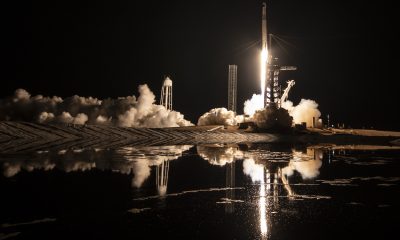

News
SpaceX’s newest drone heads to sea for first Falcon 9 booster landing
Update: Fresh from the drydock where it was built, SpaceX drone ship A Shortfall of Gravitas has departed Port Canaveral and is headed around 300 km (~190 mi) into the Atlantic Ocean for its first attempted Falcon 9 booster landing and recovery.
Designed to eventually be SpaceX’s first truly autonomous drone ship, it appears that ASOG’s first booster recovery mission(s) will nevertheless be performed like any other – with a tugboat to tow it to and from the landing zone and constant supervision from a team aboard a second support ship. Stay tuned to watch A Shortfall of Gravitas support its first Falcon booster landing as early as 3:37am EDT (07:37 UTC) on Saturday, August 28th.
SpaceX’s newest drone ship will reportedly support its first Falcon 9 booster recovery attempt ever as part of the company’s first launch in almost two months.
As previously discussed on Teslarati, SpaceX last launched on June 30th and is currently scheduled to return to flight (in a sense, at least) no earlier than August 28th, setting up an almost 60-day gap between launches – SpaceX’s longest in almost two years. Now, on top of a few significant milestones for the upgraded Cargo Dragon spacecraft meant to launch later this week, the mission will also mark an important step for the newest addition to SpaceX’s fleet of rocket recovery ships.
Known as A Shortfall of Gravitas (ASOG), that vessel is SpaceX’s third and newest “autonomous spaceport drone ship” and could potentially usher in a new era of rocket recovery for SpaceX according to CEO Elon Musk. Namely, Musk says that ASOG is designed to be the first truly autonomous drone ship. While existing ships Of Course I Still Love You (OCISLY) and Just Read The Instructions (JRTI) are technically autonomous in the sense that they are uncrewed during booster landings at sea, they must be towed to and from their recovery zones and are never far from a crewed support ship with a team of technicians.
Unlike OCISLY and JRTI, Musk says that drone ship ASOG will be truly autonomous in the sense that it’s been designed to propel itself to and from the recovery area without the need for a tugboat. According to Space Offshore, drone ship ASOG unsurprisingly won’t be operated (semi) autonomously on its very first recovery mission. It’s entirely possible that the regulatory side of things (in no way optimized for the operation of autonomous civilian ships) will have to catch up to SpaceX before ASOG is allowed to attempt a Falcon booster recovery with no human intervention.
Combined with the ship’s new ‘Octagrabber’ robot, the third of its kind, it’s not inconceivable that A Shortfall of Gravitas will one day be capable of sailing several hundred kilometers downrange, holding its position during landing, robotically safing and securing a landed booster, and sailing back to port with zero human intervention. Of course, given that things can always go wrong with systems as complex as Falcon boosters and drone ships, SpaceX will almost certainly have technicians tailing ASOG in a support ship for one or several dozen successful missions before ever attempting a fully autonomous recovery without a single human safeguard nearby.
Ultimately, though, that means that SpaceX’s upcoming CRS-23 Cargo Dragon mission could be the first in a long line of careful steps towards a truly autonomous rocket recovery system that might one day save the company millions of dollars per launch.
News
Tesla cleared in Canada EV rebate investigation
Tesla has been cleared in an investigation into the company’s staggering number of EV rebate claims in Canada in January.
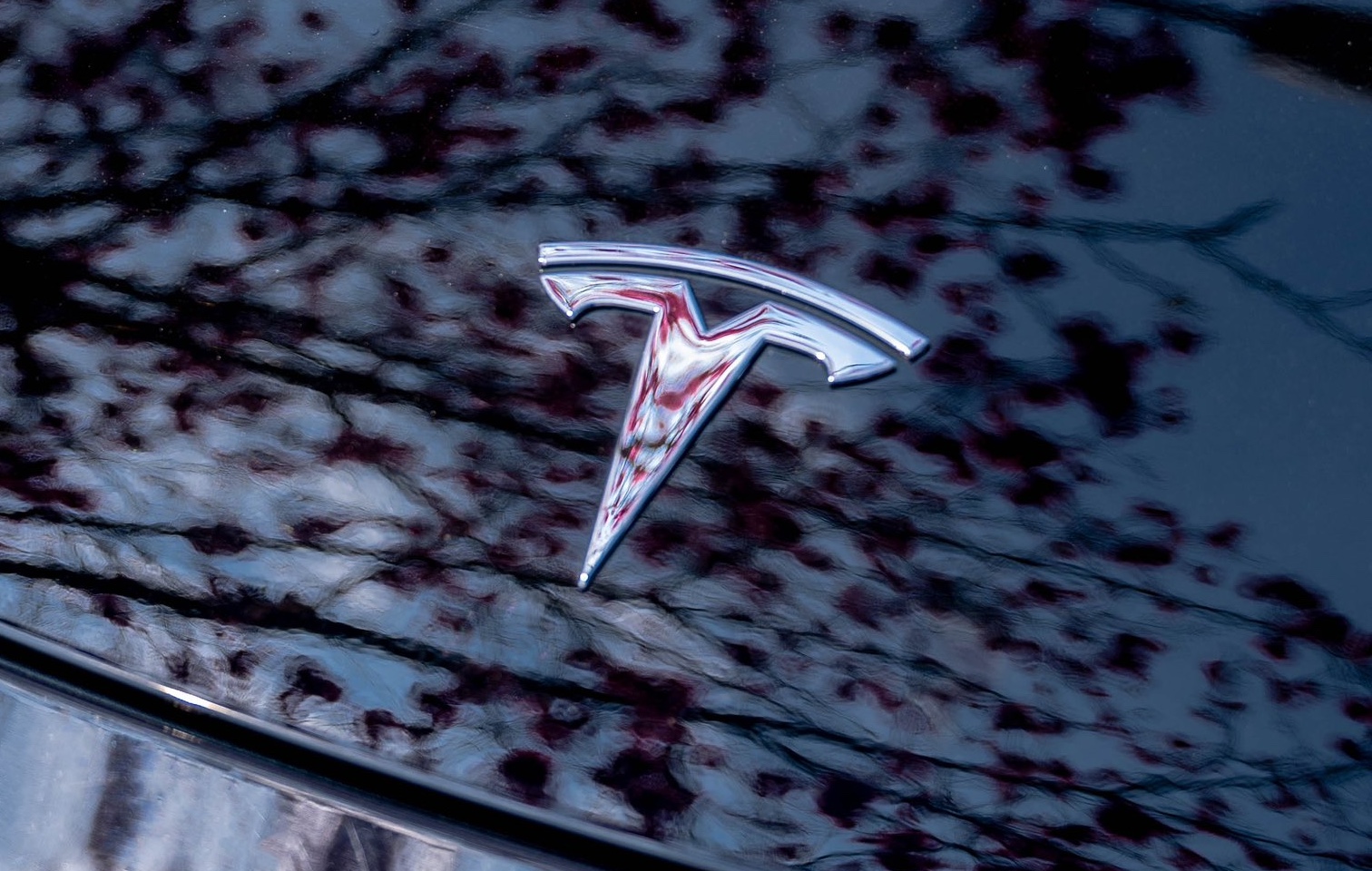
Canadian officials have cleared Tesla following an investigation into a large number of claims submitted to the country’s electric vehicle (EV) rebates earlier this year.
Transport Canada has ruled that there was no evidence of fraud after Tesla submitted 8,653 EV rebate claims for the country’s Incentives for Zero-Emission Vehicles (iZEV) program, as detailed in a report on Friday from The Globe and Mail. Despite the huge number of claims, Canadian authorities have found that the figure represented vehicles that had been delivered prior to the submission deadline for the program.
According to Transport Minister Chrystia Freeland, the claims “were determined to legitimately represent cars sold before January 12,” which was the final day for OEMs to submit these claims before the government suspended the program.
Upon initial reporting of the Tesla claims submitted in January, it was estimated that they were valued at around $43 million. In March, Freeland and Transport Canada opened the investigation into Tesla, noting that they would be freezing the rebate payments until the claims were found to be valid.
READ MORE ON ELECTRIC VEHICLES: EVs getting cleaner more quickly than expected in Europe: study
Huw Williams, Canadian Automobile Dealers Association Public Affairs Director, accepted the results of the investigation, while also questioning how Tesla knew to submit the claims that weekend, just before the program ran out.
“I think there’s a larger question as to how Tesla knew to run those through on that weekend,” Williams said. “It doesn’t appear to me that we have an investigation into any communication between Transport Canada and Tesla, between officials who may have shared information inappropriately.”
Tesla sales have been down in Canada for the first half of this year, amidst turmoil between the country and the Trump administration’s tariffs. Although Elon Musk has since stepped back from his role with the administration, a number of companies and officials in Canada were calling for a boycott of Tesla’s vehicles earlier this year, due in part to his association with Trump.
News
Tesla Semis to get 18 new Megachargers at this PepsiCo plant
PepsiCo is set to add more Tesla Semi Megachargers, this time at a facility in North Carolina.
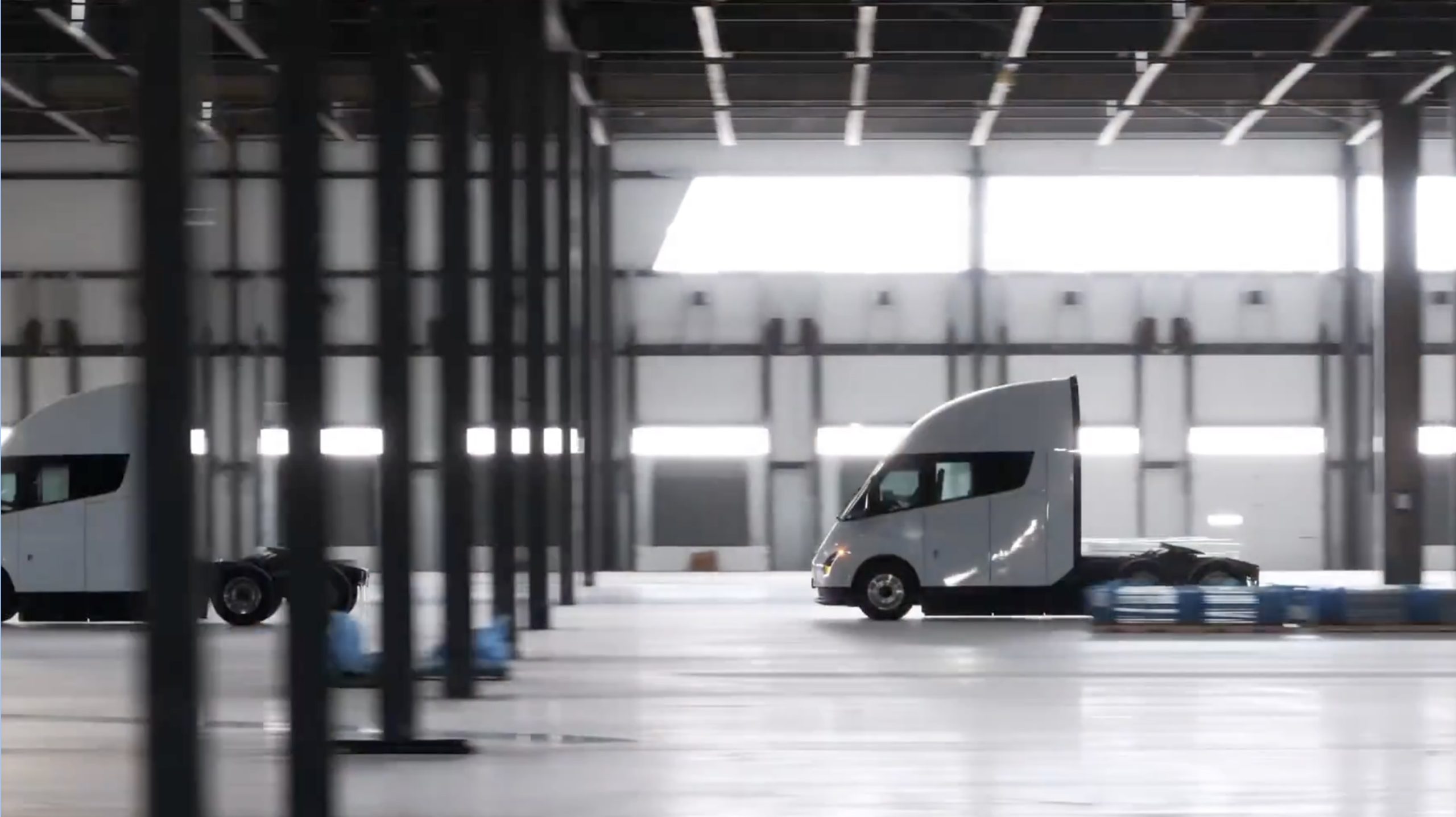
Tesla partner PepsiCo is set to build new Semi charging stations at one of its manufacturing sites, as revealed in new permitting plans shared this week.
On Friday, Tesla charging station scout MarcoRP shared plans on X for 18 Semi Megacharging stalls at PepsiCo’s facility in Charlotte, North Carolina, coming as the latest update plans for the company’s increasingly electrified fleet. The stalls are set to be built side by side, along with three Tesla Megapack grid-scale battery systems.
The plans also note the faster charging speeds for the chargers, which can charge the Class 8 Semi at speeds of up to 1MW. Tesla says that the speed can charge the Semi back to roughly 70 percent in around 30 minutes.
You can see the site plans for the PepsiCo North Carolina Megacharger below.
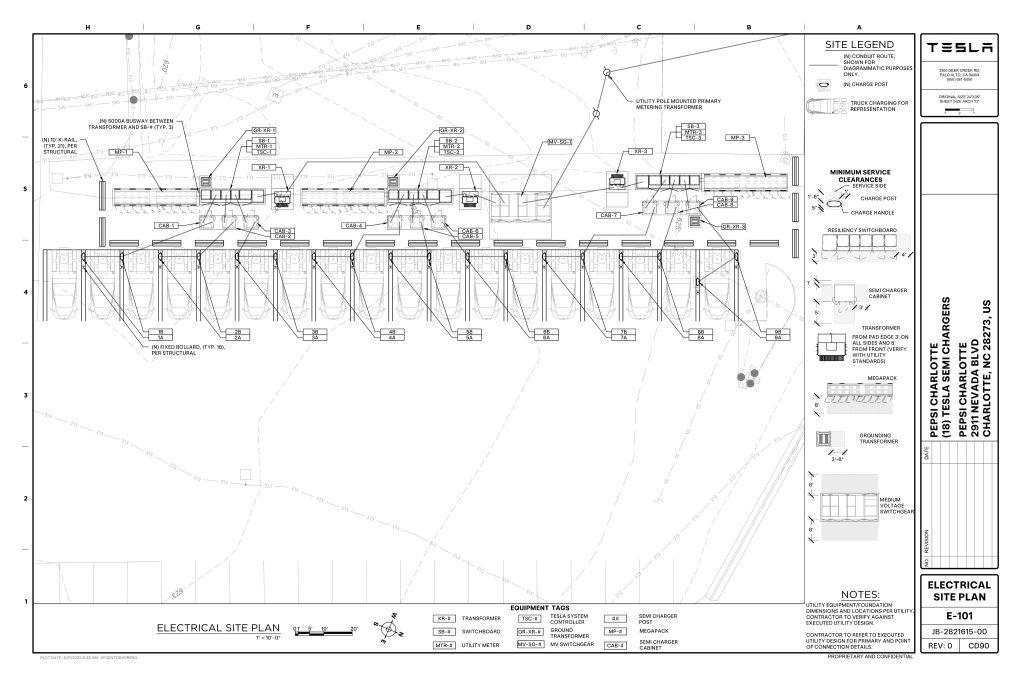
Credit: PepsiCo (via MarcoRPi1 on X)

Credit: PepsiCo (via MarcoRPi1 on X)
READ MORE ON THE TESLA SEMI: Tesla to build Semi Megacharger station in Southern California
PepsiCo’s Tesla Semi fleet, other Megachargers, and initial tests and deliveries
PepsiCo was the first external customer to take delivery of Tesla’s Semis back in 2023, starting with just an initial order of 15. Since then, the company has continued to expand the fleet, recently taking delivery of an additional 50 units in California. The PepsiCo fleet was up to around 86 units as of last year, according to statements from Semi Senior Manager Dan Priestley.
Additionally, the company has similar Megachargers at its facilities in Modesto, Sacramento, and Fresno, California, and Tesla also submitted plans for approval to build 12 new Megacharging stalls in Los Angeles County.
Over the past couple of years, Tesla has also been delivering the electric Class 8 units to a number of other companies for pilot programs, and Priestley shared some results from PepsiCo’s initial Semi tests last year. Notably, the executive spoke with a handful of PepsiCo workers who said they really liked the Semi and wouldn’t plan on going back to diesel trucks.
The company is also nearing completion of a higher-volume Semi plant at its Gigafactory in Nevada, which is expected to eventually have an annual production capacity of 50,000 Semi units.
Tesla executive teases plan to further electrify supply chain
News
Tesla sales soar in Norway with new Model Y leading the charge
Tesla recorded a 54% year-over-year jump in new vehicle registrations in June.
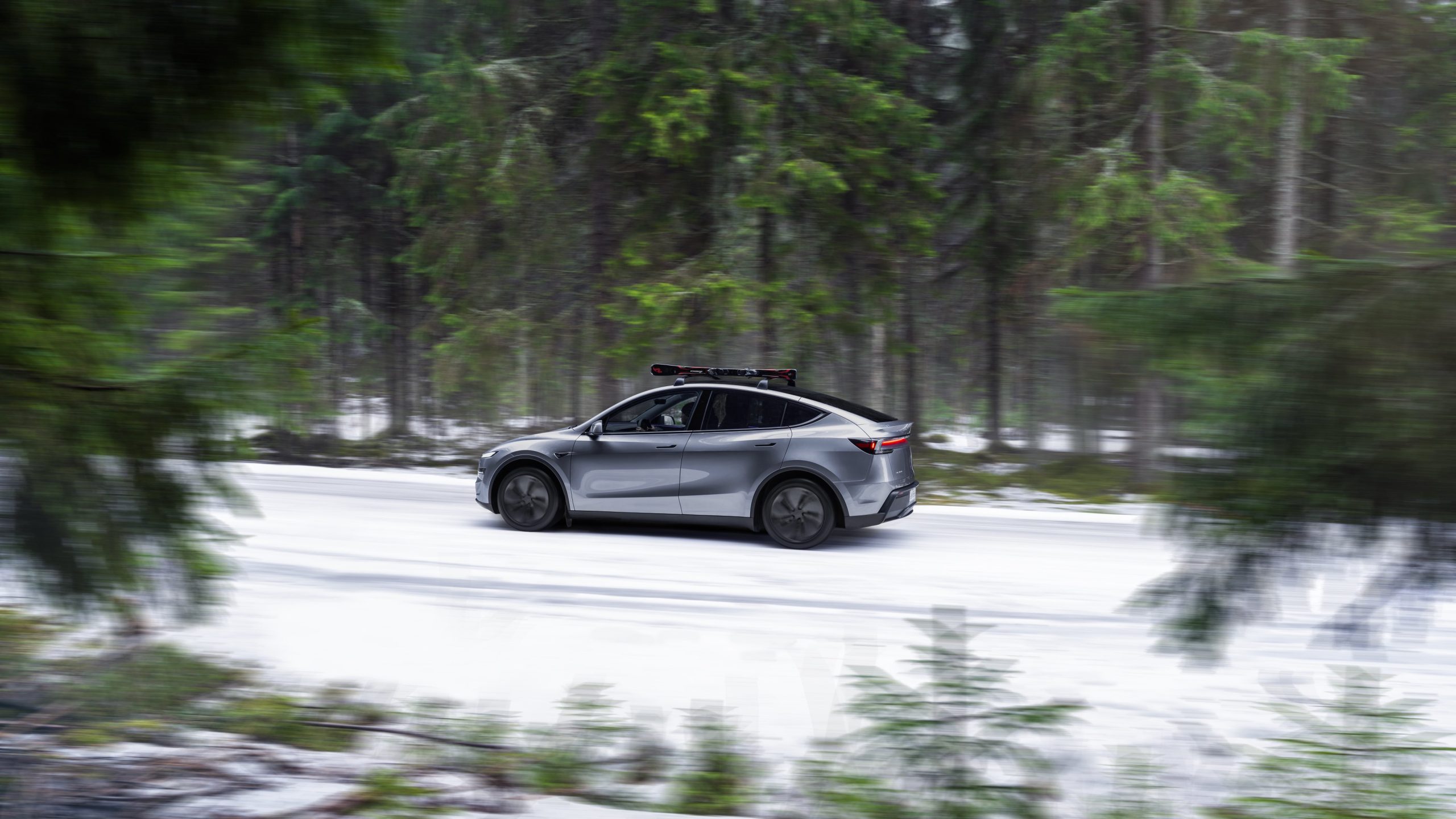
Tesla is seeing strong momentum in Norway, with sales of the new Model Y helping the company maintain dominance in one of the world’s most electric vehicle-friendly markets.
Model Y upgrades and consumer preferences
According to the Norwegian Road Federation (OFV), Tesla recorded a 54% year-over-year jump in new vehicle registrations in June. The Model Y led the charge, posting a 115% increase compared to the same period last year. Tesla Norway’s growth was even more notable in May, with sales surging a whopping 213%, as noted in a CNBC report.
Christina Bu, secretary general of the Norwegian EV Association (NEVA), stated that Tesla’s strong market performance was partly due to the updated Model Y, which is really just a good car, period.
“I think it just has to do with the fact that they deliver a car which has quite a lot of value for money and is what Norwegians need. What Norwegians need, a large luggage space, all wheel drive, and a tow hitch, high ground clearance as well. In addition, quite good digital solutions which people have gotten used to, and also a charging network,” she said.
Tesla in Europe
Tesla’s success in Norway is supported by long-standing government incentives for EV adoption, including exemptions from VAT, road toll discounts, and access to bus lanes. Public and home charging infrastructure is also widely available, making the EV ownership experience in the country very convenient.
Tesla’s performance in Europe is still a mixed bag, with markets like Germany and France still seeing declines in recent months. In areas such as Norway, Spain, and Portugal, however, Tesla’s new car registrations are rising. Spain’s sales rose 61% and Portugal’s sales rose 7% last month. This suggests that regional demand may be stabilizing or rebounding in pockets of Europe.
-

 Elon Musk2 weeks ago
Elon Musk2 weeks agoTesla investors will be shocked by Jim Cramer’s latest assessment
-

 Elon Musk2 days ago
Elon Musk2 days agoxAI launches Grok 4 with new $300/month SuperGrok Heavy subscription
-

 Elon Musk4 days ago
Elon Musk4 days agoElon Musk confirms Grok 4 launch on July 9 with livestream event
-

 News1 week ago
News1 week agoTesla Model 3 ranks as the safest new car in Europe for 2025, per Euro NCAP tests
-

 Elon Musk2 weeks ago
Elon Musk2 weeks agoA Tesla just delivered itself to a customer autonomously, Elon Musk confirms
-

 Elon Musk1 week ago
Elon Musk1 week agoxAI’s Memphis data center receives air permit despite community criticism
-

 News2 weeks ago
News2 weeks agoXiaomi CEO congratulates Tesla on first FSD delivery: “We have to continue learning!”
-
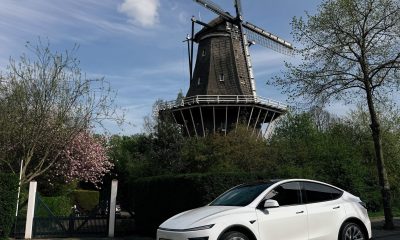
 News2 weeks ago
News2 weeks agoTesla sees explosive sales growth in UK, Spain, and Netherlands in June


